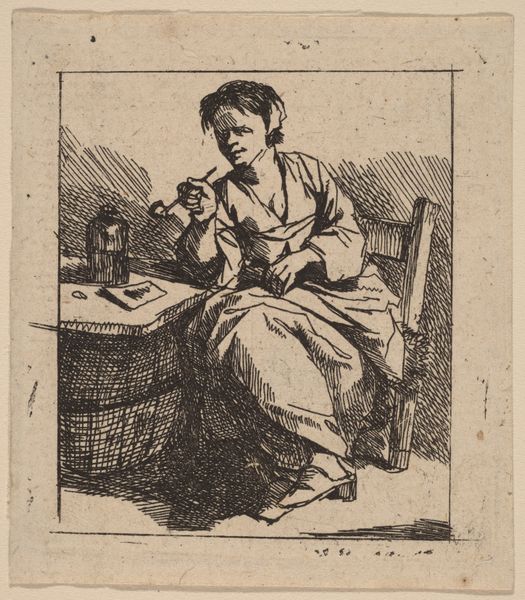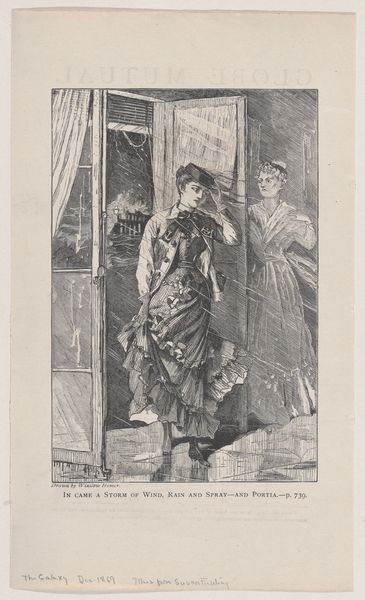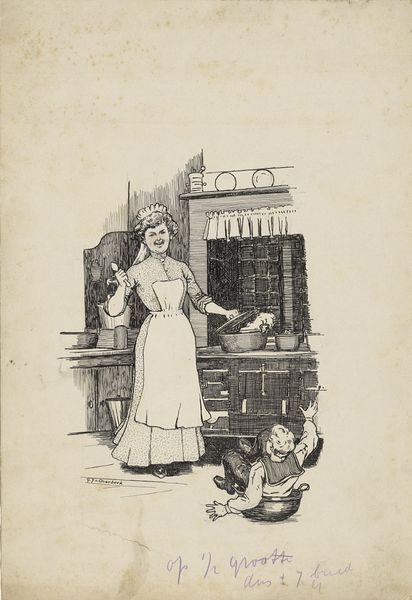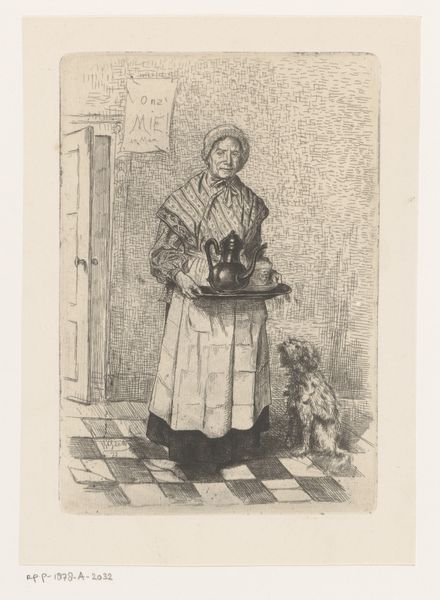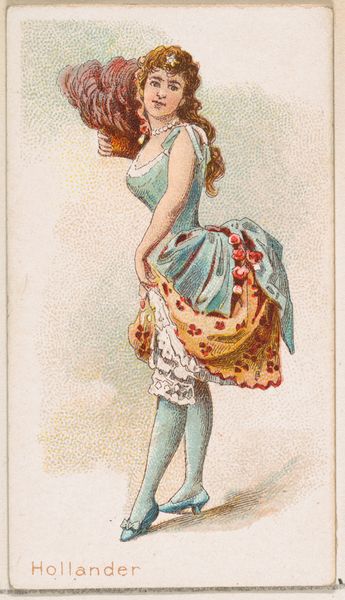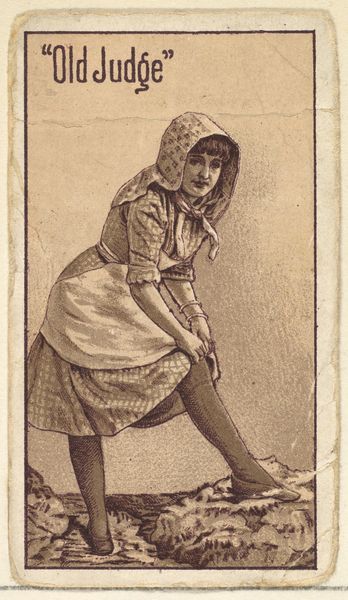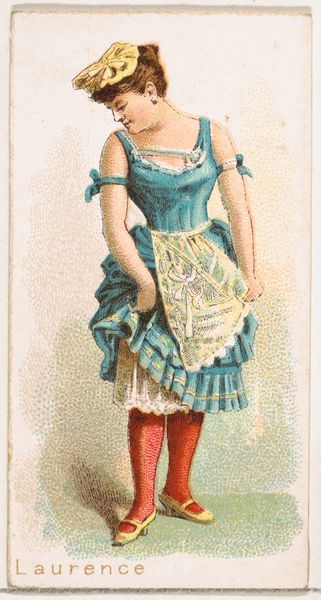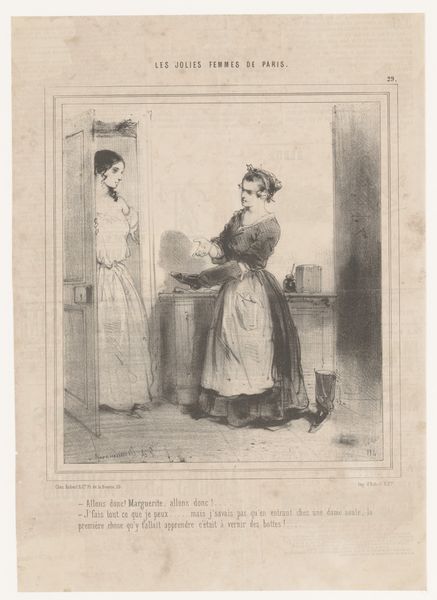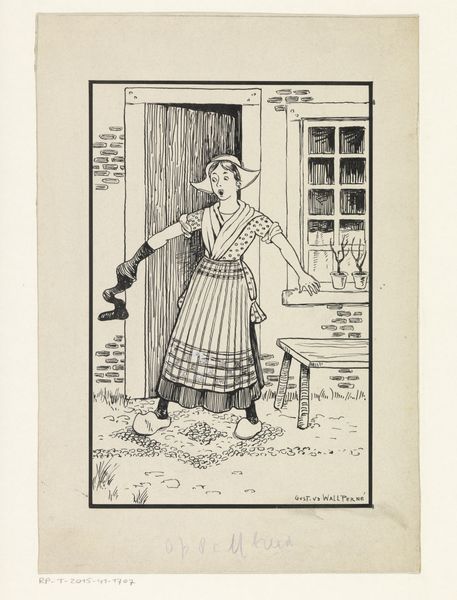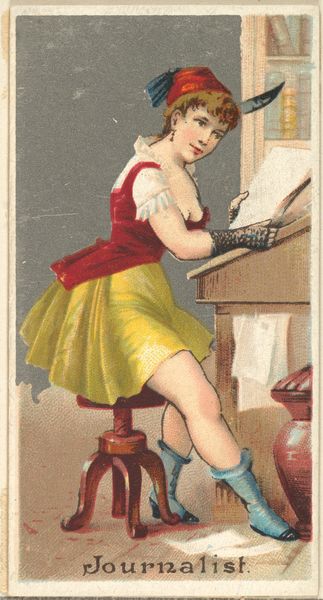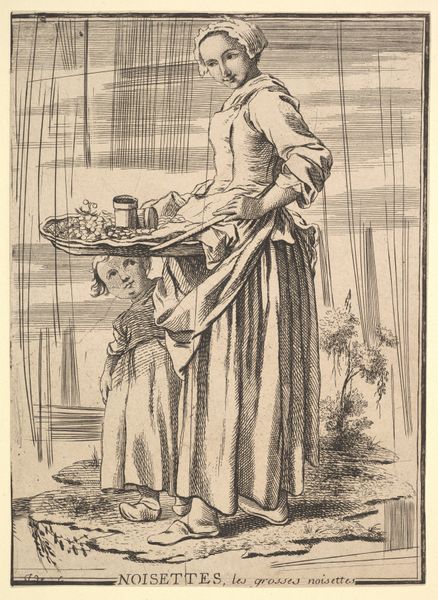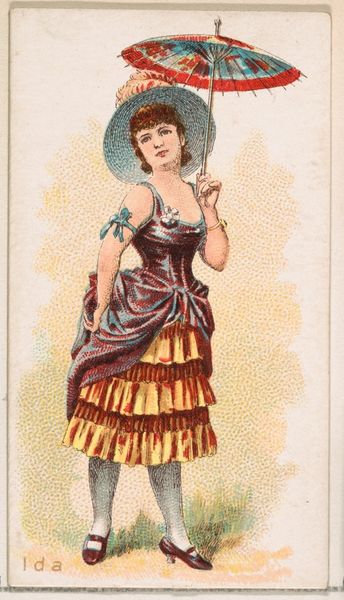
Why Molly Spilled the Milk, from the Magic Changing Cards series (N223) issued by Kinney Tobacco Company 1889
0:00
0:00
Dimensions: Sheet: 2 3/4 × 1 1/2 in. (7 × 3.8 cm)
Copyright: Public Domain
Curator: "Why Molly Spilled the Milk," a print from 1889 by the Kinney Tobacco Company, depicts a domestic scene with a mischievous narrative. But, what's your initial reaction to it? Editor: It’s small, like a playing card. And the story… it seems to blame Molly for spilling the milk, but also suggests something else caused it. What do you see in this piece? Curator: I see a reflection of late 19th-century social dynamics. Consider the power dynamics: Molly, likely a domestic worker, is implicitly blamed. The "something entered" suggests an external force, perhaps excusing her clumsiness. However, that excuse could also mask deeper societal anxieties about women’s roles and potential disruptions to domestic order. Editor: So, the card hints at issues bigger than just spilled milk? Curator: Precisely. This card was designed to sell tobacco, but it simultaneously propagates societal norms and expectations. How does the image reinforce or subvert typical representations of women at the time? Does it challenge those stereotypes at all, or perhaps reaffirm them? Editor: I guess it's kind of reinforcing them. She’s in the domestic sphere, doing domestic work, and even spilling the milk implies a kind of… incompetence? Curator: Exactly. And the caption “Hold to the light” suggests that a hidden image, maybe a clue to that "something," is revealed when held up to the light. It encourages active engagement with the image, inviting a closer look at hidden meanings. Editor: That's interesting – almost like revealing hidden biases or expectations within the image itself. I see how a simple tobacco card can reflect so much more about society. Curator: And how these mass-produced images shaped the perception and understanding of gender and class for their consumers. A reminder that art, even in its most commercial forms, is never neutral. Editor: It makes me rethink how even seemingly innocuous images can contribute to larger narratives.
Comments
No comments
Be the first to comment and join the conversation on the ultimate creative platform.

